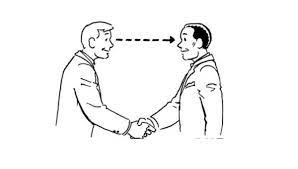
New research examining eye gaze behaviour has found that looking at people’s bodies, rather than their faces, is linked with harmful attitudes towards sexual assault.
The paper ‘Body Gaze as a Marker of Sexual Objectification: A New Scale for Pervasive Gaze and Gaze Provocation Behaviours in Heterosexual Women and Men’ was published in the Journal Archives of Sexual Behaviour, dated March 31, 2022.
The study, carried out by a team of intelligentsia at the Edith Cowan University, observes that those who ogle are more likely to have harmful attitudes.
The lead author of the study, a researcher of psychology at the ECU, Dr Ross Hollett, used eye-tracking technology and self-report measures to examine how men and women look at the opposite sex.
In Hollett’s submission, “Gazing at someone’s body instead of their face is one form of sexual objectification, or valuing people for their bodies over their minds or personality”.
“This sexually objectifying gaze behaviour can lead to more harmful attitudes and behaviours,” he summed up.
Researchers used eye-tracking technology to measure the gaze of 167 heterosexual participants towards partially and fully dressed images of men and women.
They also asked more than 1,000 heterosexual participants to self-report their own body gaze behaviours towards the opposite sex, following which participants rated statements such as “once I notice an attractive man/woman’s body, I have trouble not looking at it” and “no matter where I am, I typically find myself looking at the bodies of men/women”.
Dr Hollett said, “Using eye-tracking, we found male participants showed strong preferences for gazing at the bodies of partially and fully dressed women instead of their faces”.
“By contrast, women did not show body gaze preferences for any of the male or female imagery. In fact, they largely showed balanced gaze profiles (similar gaze towards both the head and body), with the exception of a preference to gaze at the heads of fully clothed men.
“Men were also more likely to self-report gazing at women’s bodies more than women self-reported gazing at men’s bodies,” Hollett added.
– Attitudes toward sexual assault –
To provide further context, researchers also looked at participants’ relationship status, their responses to statements about whether women invite and/or tolerate sexual assault and whether they themselves have been the victim of a sexual assault.
Dr Hollett said an important finding was the strong associations between body gaze behaviour and sexual assault attitudes.
“Specifically, men who tended to gaze at women’s bodies were more likely to assume that women invite or tolerate rough sexual conduct. That is, they were more likely to agree with statements like ‘women find forced sex a turn-on’ and ‘women secretly desire to be raped’,” he remarked.
Read Also
Dr Hollett said the research demonstrated that excessive body gaze was an important social signal of potentially harmful attitudes and behaviours.
“When we observe someone engaging in excessive body gaze, we can assume they are more likely to agree with certain sexual assault beliefs which might put them at higher risk of being a perpetrator,” he said.
“This study has shown that similar patterns of behaviour emerge when measuring gaze using self-report and eye-tracking technology which suggests heterosexuals are largely aware of their gaze habits and possibly use them to communicate sexual interest and intentions to the opposite sex.
“Understanding how women and men look at each other is important for explaining and predicting social behaviour, particularly those behaviours that have harmful consequences,” Dr Hollett said.
– Eye contact around the world –
Eye contact is notably one common way of communication around the world, which is, however, construed in different ways in different climes. While some cultures see it as a hallmark of disrespect, others consider it as disrespectful. So, to play on the safer side, it is always advised to be attuned to the varying eye-contact traditions across the world
In many Western countries, it is construed as assault and rude to ogle, conversely, in most African countries, it is seldom considered a crime.
According to TheTravel, In China, for instance, people make eye contact when they are angry, as it is meant to challenge the other person and is also a sign of disrespect.
Similarly in Iran, eye contact is much considered inappropriate for the opposite gender. Out of respect, both persons are supposed to lower their gaze when communicating with the opposite sex.
In India, staring at a woman for 14 seconds could put a man in serious trouble.
In Vietnam, eye contact is a way of showing interest in the opposite gender, while in the US, eye contact is considered important, as it shows a commitment when having conversations and a willingness to engage. However, it must be done correctly, as prolonged, uninterrupted eye contact can feel intrusive or be misconstrued as sexual assault.
Other countries with moderate welcome for eye-gaze include Greece, the UK, France and New Zealand.
ScienceDaily
Copyright PUNCH.
All rights reserved. This material, and other digital content on this website, may not be reproduced, published, broadcast, rewritten or redistributed in whole or in part without prior express written permission from PUNCH.
Contact: [email protected]





